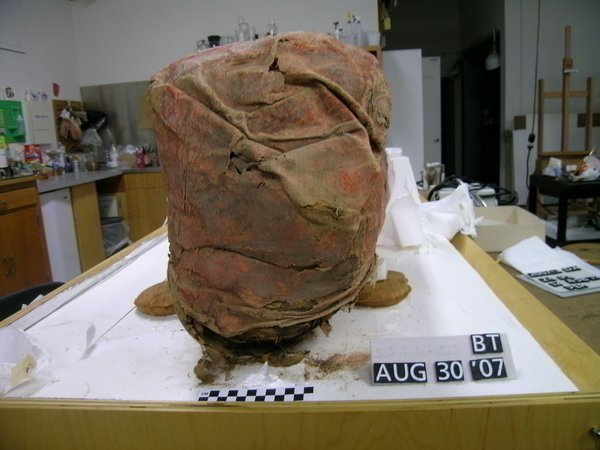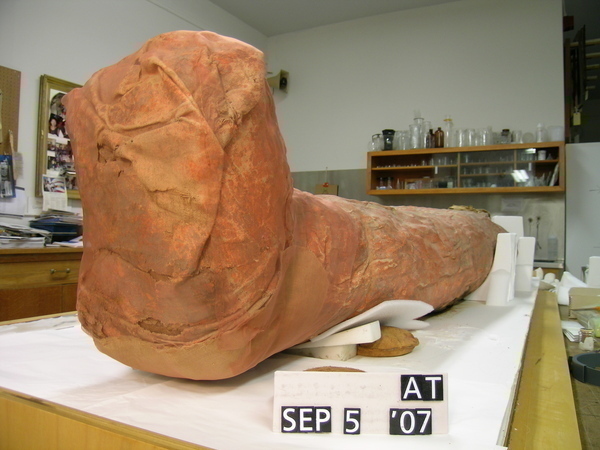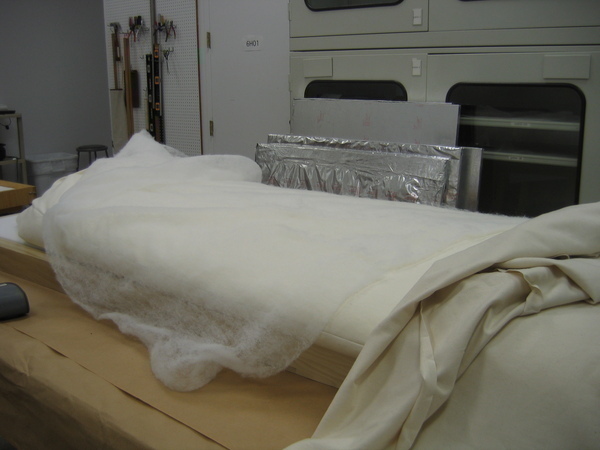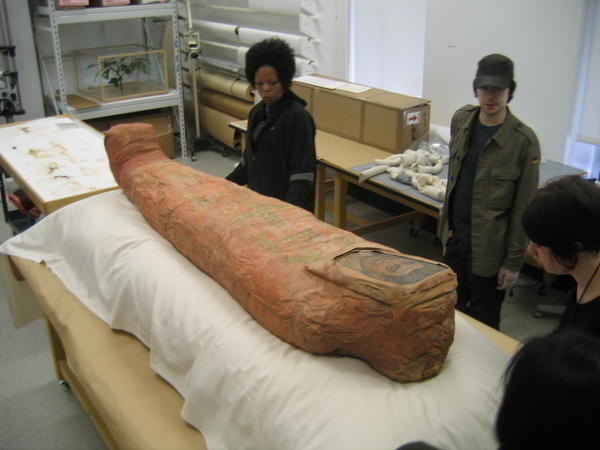Conservation Treatment of Demetrios Continues
To recap previous blogs, the mummy of Demetrios is wrapped in linen, then the entire surface of the linen is painted with red lead. On top of that are areas of gilded decoration. The next step in preparing Demetrios for exhibition was to check the stability of the surface paint and gilding. Where necessary, this was consolidated using an appropriate adhesive. Next, surface dust was removed with a soft brush into a vacuum on very low suction. Then the surface was cleaned with an appropriate solvent. A small area is cleaned at a time, using cotton swabs. We constantly check the swabs to make sure we are only removing surface dust and grime, and not any of the original material. When necessary, we work with the aid of a microscope, so we can see the effect of our cleaning in greater detail.
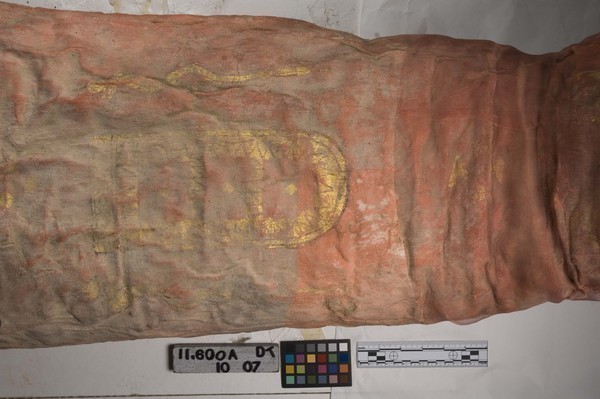
during treatment. the area to the right has been cleaned revealing the read lead paint and gilding
For the most part, the linens on Demetrios are in relatively good condition; however, the linens around the feet are unstable. There are large holes on the bottom and proper left side.
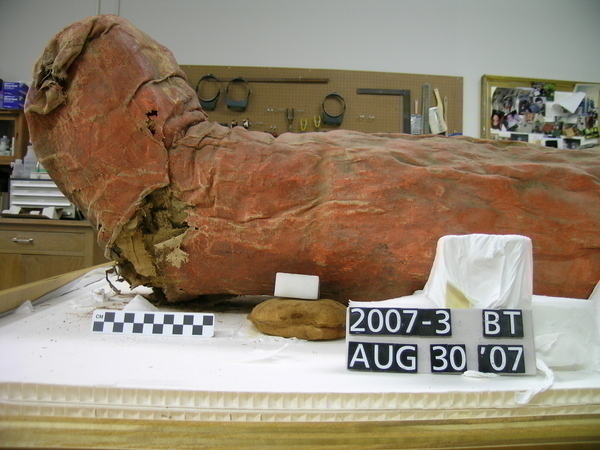
the condition of the linens at the feet before treatment
The BM does not have a textile conservator on staff, so we hired a specialist in this area to work with us. (Learn more about hiring a conservator through the American Institute for Conservation.) Kathy first patched the area with a piece of linen held in place with a piece of sheer material called Tetex (an open weave polyester material). While the linen material is very noticeable, it was needed to contain all of the powdering fragments of ancient linen. The Tetex material is very sheer – so you don’t really see it – but also very strong. By using Tetex to secure the linen (she sewed this to the new linen, then wrapped it around the feet and sewed the Tetex to itself) she did not have to sew through the ancient linen material which would cause further damage. Next, she covered the whole foot area with another piece of Tetex, also sewed to itself. Again, this material is strong enough to hold all of the loose linens in place, but sheer enough that you can see the underlying material. When you look at this object on display, it will not be that noticeable unless you are specifically looking for it.
the foot, after treatment
The next step was to create a display board that he could also travel on so that handling would be minimal. How objects are handled plays a huge role in their long-term preservation. A bed of polystyrene balls and polyester batting was sealed within a giant bag, and covered with display fabric. Demetrios was then placed on this. The polystyrene balls conformed to his shape, fully supporting him and helping to absorb any vibration as he travels. The installers can handle Demetrios by the support board rather than having to lift his actual body at each venue. This drastically reduces the possibility of damage to Demetrios. That’s it for the conservation treatment! Demetrios will then get crated by a special art packing company, and head to the Indianapolis Museum of Art. Look for him there beginning July 13.
the support board
Demetrios on his support board

Tina March is an assistant conservator of objects at the Brooklyn Museum where she has been since receiving her M.A. in Conservation from Buffalo State College in 2001. She has a B.A. in Art Conservation from the University of Delaware. Previous internships include The Art Institute of Chicago, the Guggenheim Museum and The National Museum of the American Indian.

